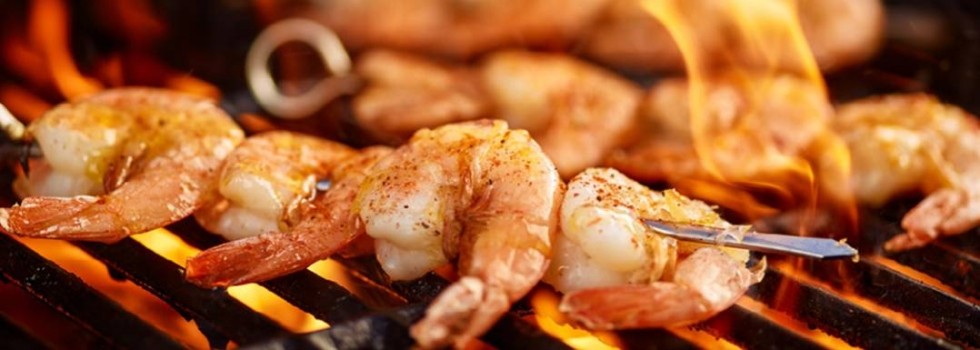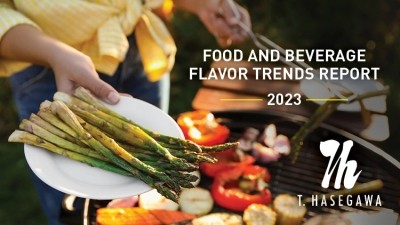Promotional Features
Fired-up flavors: The science behind sizzling summer barbecue
Outdoor grilling is the ultimate summer ritual.
As temperatures are scorching from coast-to-coast, Americans take the cooking experience outside, firing up the grill or smoker to prepare meats, veggies and other barbecue fare at picnics, cookouts and backyard parties across the country. Grilling meat outdoors often marks the official start of summer for many North Americans, kicking off ‘barbecue season’ that extends through fall.
Summer barbecues are big business for suppliers, too. The global barbecue grill market is expected to reach $6.97 billion by 2030, and North America sales represent more than half of this market.1 Clearly, the popularity of outdoor cooking is greater than ever, and on a steady course to continue growing in the future.
So aside from charcoal and propane, what is fueling the incredible growth of the barbecue market? The answer is flavor technology.
While it might seem like a great barbecue is as simple as putting top quality meats on the grill, there is a complex science behind the flavor of grilled meat and an industry that caters to optimizing the way we taste this popular food.
The science of flavor optimization
The fundamental flavor science behind barbecued meats is the Maillard reaction – a chemical reaction that occurs when heating foods between 300 to 500 degrees Fahrenheit. Flavor compounds in raw foods react with amino acids, proteins and sugars to produce a browning effect that gives cooked foods a complex flavor. This biotransformation of molecules during the Maillard reaction process is what gives grilled meat its golden-brown color, with a darker crust that packs an intense flavor.
While the Maillard reaction occurs naturally during the process of cooking meat, food brands are challenged with delivering a reliable, robust flavor experience even when ingredients are packaged or frozen. This has led to an increase in demand for reaction flavor technology that enhances and protects the flavor of savory foods that are cooked using a thermal process.
California-based T. Hasegawa USA, is leading the industry in developing innovative new technology that optimizes the taste of food and beverage products. Many of these advanced technologies focus not only on producing an intense flavor profile, but also on delivering the ultimate taste experience.
“Reaction flavors are not just the foundation of barbecue meats, they’re a critical part of nearly all savory foods products,” explained Austin Luft, senior flavor chemist at T. Hasegawa USA. “Since they sit in the middle of the flavor pyramid, reaction flavors are responsible for the complex taste of grilled meat. Our team is able to extract and compound the specific flavor molecules produced during the Maillard process and apply these to food products.”
Last year, T. Hasegawa introduced BOOSTRACTTM to the North American market. This proprietary Maillard reaction-based flavor modulation technology amplifies the kokumi mouthfeel effect and flavor intensity, while masking undesirable flavor off-notes and bitterness, to create optimal tasting food and beverage products. Using reaction flavor development, food scientists can naturally replicate the specific flavors of meats such as beef, pork and chicken that have been cooked in various applications such as grilled, wood-fired, char-grilled, smoked, roasted, broiled, baked or fried. Scientists isolate each reaction flavor compound, then extract the molecules responsible for each distinct flavor and apply these to food products to ensure a consistent taste.
There have been recent advancements in flavor compounding – isolating and concentrating characteristics of food ingredients to maximize the taste. Recently, T. Hasegawa introduced HASEAROMATM, a research and enhancement technology that reproduces the ‘first bite’ sensation of experiencing a food for the first time, packed with intricacy and nuances of flavor. While it has extensive applications in the sweet category, such as fruit flavors that are utilized in barbecue marinades and sauces, HASEAROMA is gaining momentum within savory flavors such as chicken, beef, pork, seafood and other proteins popular for grilling.
Barbecue is a major focal point for restaurant foodservice as well and new technologies designed to elevate the flavor of barbecue in restaurants are making it easier for foodservice operators to serve consistently great-tasting barbecue fare. One such technology is T. Hasegawa’s ChefAromaTM, a reaction-flavor-based process that replicates the complex flavor of prepared culinary recipes. It uses real ingredients like butter, onion and wine, replicating the flavors that result from thermal heat processes to instantly deliver the taste of foods that have been cooking for hours.
“Within the barbecue category, ChefAroma can fast-track the process of creating mother sauces for preparing back-of-house marinades or barbecue sauces,” explained Luft. “It can significantly cut down the prep time while delivering a higher level of flavor intensity in bulk packaging for chefs and restaurant chains.”
Providing value in the barbecue category
In response to economic pressures of the past year, consumers are seeking better value in their food purchases in terms of quantity, versatility and quality. This heightened awareness of value is even more critical in the high-cost protein category. According to Mintel, over 44% of US consumers say that low price is an important purchase driver, putting responsibility on brands to demonstrate value-for-money through premiumization of ingredients, flavor varieties, and packaging.2
Economic pressures are shaping the protein category as consumers explore more cost-effective ways to enjoy barbecues, such as switching from costly red meats to lower-cost poultry, hot dogs and sausages. In addition to offering familiarity to consumers, these protein options can be easily customized through flavorful sauces and marinades.
Flavor is consistently cited as a primary factor in purchase decision and repeat purchase, since flavor is often a source of excitement and premiumization. Products that make it easier and more convenient to prepare barbecued meats with rich flavor have proven to be popular with consumers, leading to brands exploring new formulations in meat flavors and especially culinary marinades and sauces to demonstrate value within the category.
Bringing the heat with sauces and marinades
There’s a lot more to barbecue than the meat itself. Classic barbecue fare like pulled pork, hot wings and beef brisket are dependent on rich marinades and sauces to achieve their trademark taste. Often considered a great way to easily add robust flavor profiles to proteins and other dishes, sauces and marinades draw-in consumers who are interested in exploring exciting new flavors.
The sauce category also has a broad appeal with more than 94% of all US adults enjoying these products, and rich flavor innovation is at the heart of this growing category.3 Sauces and marinades can elevate traditional dishes and even invigorate otherwise mundane foods with rich flavor. Sauces and marinades even help deliver value through flavor without having to rely on the most expensive cuts of meat. A 2021 Mintel survey found that 64% of protein consumers agree that the right marinade can make any cut of meat taste good.4
Sauces and marinades are perfectly positioned for flavor exploration, with consumers increasingly exploring ingredients from around the world, such as galangal, garam masala, paprika, chipotle, hoisin, poblano chili, and lemongrass as they incorporate these global flavors into traditional American barbecue fare.
Redefining barbecue with plant-based proteins
Adding to outdoor grilling’s popularity is the growth of plant-based protein flavors in recent years. A 2018 Gallup poll indicated that more than 5% of the US population identify as vegetarian, and that number is on the rise.5 There are many motivating factors for a plant-based diet, ranging from sustainability to myriad health benefits, such as decreased risk of heart diseases and weight loss.
The movement toward plant-based diets is also driven by the rapidly expanding market of authentic-tasting alternative proteins. Restaurants menus and supermarkets across the US are brimming with new vegetarian and vegan offerings. As brands move to capitalize on the growth of plant-based diets by introducing better-tasting alternative proteins, there is increased focus on flavor technologies that provide the familiar taste that consumers expect from animal proteins.
“Research has proven that consumers are open to plant-based proteins if it doesn’t require sacrificing what they love about meat, such as a rich, fatty mouthfeel and robust flavor,” said T. Hasegawa Director of Savory Technology, Mary Maier. “Our fat modifying process can provide a completely authentic experience with plant-based ingredients, making it possible to enjoy a juicy burger without actually eating meat.”
The key to developing authentic-tasting meat alternatives is harnessing the flavor of Maillard reaction on a molecular level and applying this to plant-based ingredients. Food flavorists are tasked with replicating the taste and texture of plant-based meat alternatives and ensuring the authenticity of flavors and aromas as these foods are cooked – which can vary drastically.
“Savory technology like T. Hasegawa’s HASEAROMA allows us to apply specificity of flavor to plant-based proteins, replicating the taste of certain cuts of meat such as chicken skin, thigh or breast, or replicate varieties of meat such as wagyu beef or duck – all without any animal ingredients,” adds Maier.
Innovating barbecue flavors in the future
Summer will always be a prime time to take the cooking experience outdoors and explore new ways to prepare grilled and smoked meats. With immense interest in grilling, there is a major opportunity for food brands to capitalize with new meat flavors, sauces, marinades and other products designed to help consumers grill-up the ultimate barbecue. Novel technologies are making it easier than ever to optimize the flavor of barbecue products and offer plant-based proteins that allow consumers to explore healthier barbecue options without compromising on flavor or taste experience.
Food and beverage brands who are looking to take their protein product development to the next level of flavor can contact T. Hasegawa USA.
References
1. ReportLinker. 2022. Barbeque Grill Market Size, Share & Trends Analysis Report By Product, By Application, By Region And Segment Forecasts, 2022 – 2030, US.
2. Mintel. 2022. A Year of Innovation in Meat & Poultry.
3. Mintel. 2022. US Trending Flavors and Ingredients in Dips and Sauces.
4. Kantar Profiles/Mintel, July 2021.
5. Gallup. Percentage of Americans who are vegetarian or vegan steady.







